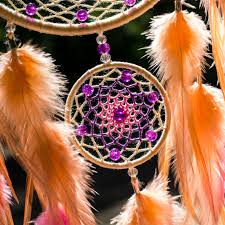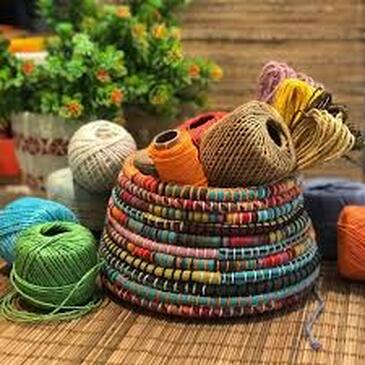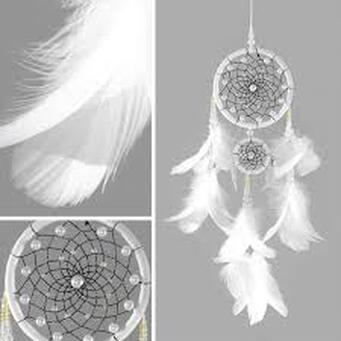Dreamcatchers
Legend
Ancient legends about the history and origin of the dreamcatcher exist among several Native American tribes, but are most common and seem to originate among the Ojibwe and Lakota nations. While many cultures consider spiders to be creepy crawlers, the Ojibwe people saw them in a different light, as symbols of protection and comfort. According to an old Ojibwa legend, a mystical and maternal "Spider Woman" once served as the spiritual protector for her tribe, especially in concern to young children, kids and babies. As the Ojibwe people flourished and spread out across the land, it was difficult for The Spider Woman to continue to protect and watch over all the members of the tribe as they migrated farther and farther away. This is why she created the first dreamcatcher. Following her example, over the course of generations mothers and grandmothers continued to ritualistically recreate the maternal keepsake as a means of mystically protecting their children and families even from a distance.
Symbolism
All parts of the authentic Native American dreamcatcher have meaning tied to the natural world. The shape of the dreamcatcher is a circle because it represents the circle of life and how forces like the sun and moon travel each day and night across the sky. The dream catcher web catches the bad dreams during the night and dispose of them when the day comes. As for the good dreams, the feathers act as a fluffy, pillow-like ladder that allows them to gently descend upon the sleeping person undisturbed. There is some contention when it comes to the meaning of the beads that often decorate the dreamcatcher. According to some American Indians, the beads symbolize the spider—the web weaver itself. Others believe the beads symbolize the good dreams that could not pass through the web, immortalized in the form of sacred charms.
Examples
Your Mission |
Materials from your Bag |
|
To create yourself a dreamcatcher, using the materials I provided you or in addition or substitute some of your own materials of your choosing.
You will be graded on: Effort Craftsmanship Creativity |
Metal Hoop
Suede Lace Waxed Thread Beads Feathers Glue |
Step by Step Instructions
Pssst,........Scroll down to Part 2 to get started










